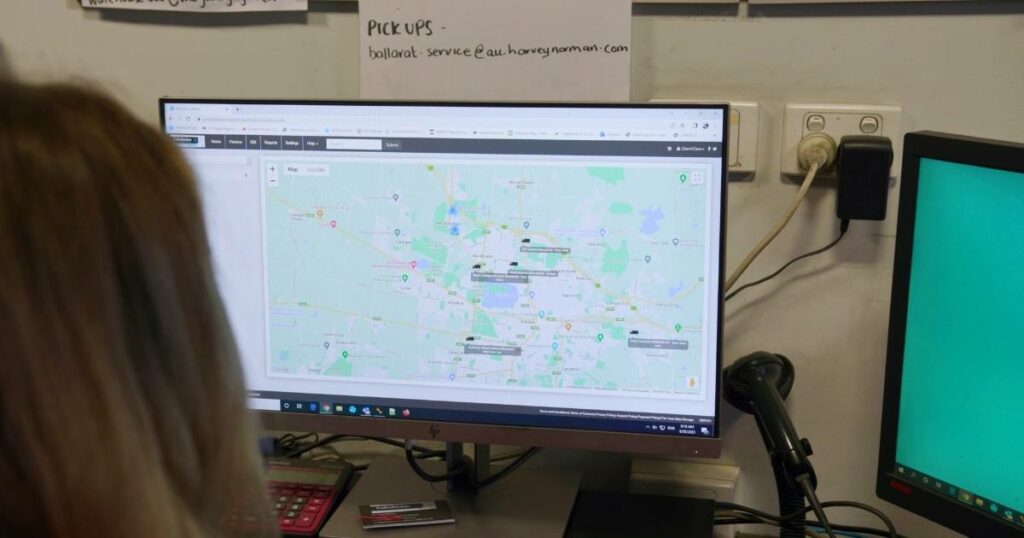Table of Contents:
- The Road Ahead.
- Across the country and across the supply chain
- From Road Warriors to Road Worries
- Mad Maxing Your Logistics.
- Finding the way
- Send it
- WHAT’S IN THE SHED
- The perfect size for your company
- Your electronic pal who’s fun to be with
- Revving Up Your Company’s Efficiency
How logistics software can help transportation companies overcome driver shortages.
The transportation and logistics industry in Australia is facing a significant challenge in the form of driver shortages. According to a report published by Australian Industry Standards, the transport and logistics workforce is forecast to grow from 574,000 in 2021 (currently the most up-to-date data available) to 600,648 by 2026: a rise of 4.6%. Yet despite this projected growth, the industry continues to find it difficult to attract employees.
The shortage is largely due to an ageing workforce and a lack of interest among young people in pursuing a career in the transportation industry. This poses significant problems for the industry, given the rapidly increasing demand for e-Commerce and its need for rapid and efficient deliveries.
However, with the advent of logistics software solutions, transportation and logistics companies can now overcome this challenge and operate more efficiently with fewer people on the payroll.
In this article, we will have a look at the staffing shortages currently affecting the Australian logistics industry and investigate how a TransVirtual software suite can allow your company to go from road worries to Road Warriors.
The Road Ahead.
The Australian transportation industry is responsible for moving goods worth billions of dollars every day along our 877,651 kilometres of roads. The industry includes a wide range of vehicles such as trucks, vans, forklifts, and other specialized vehicles. All of these machines need skilled operators to drive them both efficiently and safely.
Across the country and across the supply chain
In addition to drivers, logistics and delivery businesses also need personnel to operate their warehouses, oversee customer care, undertake promotions, and put together orders for shipping. In short, the staffing situation affects every aspect of the supply chain.
Staff shortages have a profound impact on every facet of the Australian — and, indeed, the worldwide — logistics industry, leading to delayed deliveries, increased costs, and disrupted supply chains. The scarcity of drivers diminishes capacity, places extra burdens on existing employees, hampers operational efficiency, and exacerbates the overall strain on the logistics network. These strains have a flow-on effect that affects consumers and businesses alike.
From Road Warriors to Road Worries
The Australian Bureau of Statistics reports that registrations of commercial vehicles of all types grew between 2020 and 2021. (Source: ABS Motor Vehicle Census)
- Light Commercial Vehicles: 3.3%
- Light Rigid Trucks: 6.0%
- Heavy Rigid Trucks: 1.7%
- Articulated Trucks: 4.6%
And with the continuing rapid growth of e-Commerce post-COVID-19 and the subsequent increased demand for drivers and operators, these numbers highlight the challenges faced by transportation companies to maintain adequate staffing levels.
Mad Maxing Your Logistics.
One solution to the ongoing driver shortage problem is the use of logistics software. Logistics software systems are designed to streamline the transportation process by automating tasks such as route planning, dispatching, and delivery tracking. By using logistics software, companies can manage their operations more efficiently, which can lead to cost savings and increased productivity.

Finding the way
Picking the most efficient route for your drivers to take is one of the key ways that logistics software can help overcome the driver shortage problem. Route optimization software uses advanced algorithms to determine the most efficient route for each delivery, taking into account factors such as traffic flows, delivery deadlines, and weather conditions.
By optimizing delivery routes, companies can reduce the number of drivers required to make deliveries, as each driver can cover more ground in less time.
Send it
Another type of logistics software that can help overcome the driver shortage problem is automated dispatching software. This software automatically assigns delivery tasks to drivers based on their availability and location.
This can eliminate the need for manual dispatching, which can be time-consuming and prone to errors. By automating the dispatching process, companies can ensure that their drivers are always assigned to the most efficient delivery tasks, reducing the need for additional staff.
An additional benefit of delivery management software is that a smaller number of staff are needed to communicate with drivers on the road. The software does all the communicating for you.
WHAT’S IN THE SHED?
In addition to route optimisation and automated dispatching,
The perfect size for your company
One of the major advantages of TransVirtual’s logistics software is that it can be customized to suit the specific needs of each transportation company.
For example, if your company specializes in delivering perishable goods, you may require specialized software that can track temperature and humidity levels in delivery vehicles.
Similarly, if your delivery company operates in remote areas, then the software can be set up to manage deliveries in hard-to-reach locations.
Your electronic pal who’s fun to be with
Logistics software solutions are also becoming increasingly user-friendly and accessible. Many software providers offer cloud-based solutions that can be accessed from any device with an internet connection.
This means that transportation companies can access their logistics software from anywhere, making it easier to manage operations remotely.
Revving Up Your Company’s Efficiency
There are no quick-fix solutions to the driver shortage problem faced by the Australian transportation industry. However, by adopting a logistics software system, companies can operate more efficiently with fewer staff members on the payroll.
By automating tasks such as route planning and dispatching, transportation companies can free up existing staff for retraining in other areas of the operation. With the increasing availability of customizable and user-friendly software solutions, transportation companies can tailor their logistics software to suit their specific needs and operate more effectively in an increasingly competitive market.



